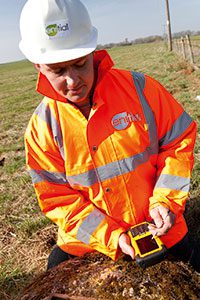 AN environmental monitoring specialist has been appointed to take odour samples at composting sites which will be tested using the latest sensory testing techniques – human noses.
AN environmental monitoring specialist has been appointed to take odour samples at composting sites which will be tested using the latest sensory testing techniques – human noses.
The technique, known as olfactometry, will check the efficiency of biofilters used to reduce odour concentrations at composting locations. Human noses are used as sensors rather than chemicals because they can detect odour at concentrations well below the sensitivity levels of chemical analytical methods.
Sam Dean, liaison manager at Enitial, said: “People really notice bad smells, so if there is a problem you can be sure people will let you know. Doing it right makes sure any issues are sorted before they become a problem.”
The company has been asked to monitor the effectiveness of biofilters at sites across the country to ensure they are bringing odour levels down sufficiently. Inlet and outlet samples are taken by technicians and sent to laboratories specialising in the ‘human nose’ technique. Each sample taken is recorded with date/time and GPS location to ensure sample traceability using a PDA-based system.
Using sensory methods is a relatively new technique and is particularly useful in odour annoyance or nuisance situations because they provide a direct link to how odours are perceived by people. “It’s also a good way of determining how effective odour control techniques, such as biofilters, are at mitigating such issues,” the company said.
In the olfactometry testing procedure, smells are presented alongside an odour-free gas – as a reference – to a group of six panellists simultaneously. In comparing the gases emitted from each port, the panellists are asked to report how sure they are they can smell anything. The responses of the panellists over a range of dilution settings are used to calculate the concentration.







